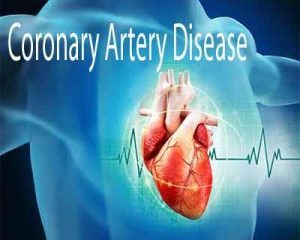- Home
- Editorial
- News
- Practice Guidelines
- Anesthesiology Guidelines
- Cancer Guidelines
- Cardiac Sciences Guidelines
- Critical Care Guidelines
- Dentistry Guidelines
- Dermatology Guidelines
- Diabetes and Endo Guidelines
- Diagnostics Guidelines
- ENT Guidelines
- Featured Practice Guidelines
- Gastroenterology Guidelines
- Geriatrics Guidelines
- Medicine Guidelines
- Nephrology Guidelines
- Neurosciences Guidelines
- Obs and Gynae Guidelines
- Ophthalmology Guidelines
- Orthopaedics Guidelines
- Paediatrics Guidelines
- Psychiatry Guidelines
- Pulmonology Guidelines
- Radiology Guidelines
- Surgery Guidelines
- Urology Guidelines
Single-phase CT angio as good as dual-source CT in diagnosing CAD

The image quality (IQ) and diagnostic value of single-phase coronary CT angiography (SP-CCTA) for the diagnosis of coronary artery disease, is equivalent to routine CCTA on third-generation dual-source CT (DSCT), according to a new study published in the International Journal of Cardiology.
Yi-Ning Wang, Department of Radiology, Peking Union Medical College Hospital, Beijing, China, and colleagues conducted the study to investigate the feasibility of replacing the CCTA scan by SP-CCTA images extracted from a stress dynamic myocardial CT perfusion (CTP) exam by evaluating the IQ and diagnostic value of SP-CCTA compared with coronary angiography (CAG).
Coronary artery disease (CAD) remains a leading cause of mortality and morbidity worldwide. Its accurate diagnosis requires assessment of both functional and morphologic information. CCTA has been established to exclude CAD morphologically with good sensitivity and excellent negative predictive value. Myocardial CTP has been developed as an effective method for assessing myocardial ischemia caused by CAD, however previous studies using second-generation DSCT suffered from the inability to cover the entire coronary arterial tree during one dynamic CTP scan.
Advances in CT technology now allow the entire coronary arterial tree and myocardium to be covered during one dynamic CTP scan using third-generation DSCT.
For the study, consecutive symptomatic patients were prospectively recruited and scanned with an ATP-stress dynamic myocardial CTP and routine CCTA protocol using third-generation DSCT. Noise reduction was applied to optimize image quality (IQ), the CTP phase with the best enhancement of the coronary arteries was selected as the SP-CCTA. IQ was assessed qualitatively. Using coronary angiography (CAG) as the reference standard, the diagnostic performance for stenosis detection was compared for SP-CCTA and routine CCTA.
56 patients underwent the CTP and CCTA examination, among which 39 patients underwent CAG.
Read Also: CT angiography motivates people to adopt healthier habits: AHA
Key Findings:
- The qualitative IQ scores of SP-CCTA were similar to that of routine CCTA.
- On a per-segment basis, the sensitivity, specificity, positive predictive value, negative predictive value, diagnostic accuracy and area under the receiver-operating-characteristic curve results of SP-CCTA and routine CCTA for diagnosis of stenosis ≥50% exhibited no significant difference (SP-CCTA: 78.1%, 94.9%, 77.4%, 95.1%, 91.6% and 0.935 vs. routine CCTA: 74.7%, 95.3%, 78.0%, 95.3%, 91.6% and 0.937; all p > 0.05).
- The mean effective radiation dose of CTP and routine CCTA plus CTP were 3.92 ± 1.72 mSv and 5.98 ± 2.01 mSv (p < 0.05), respectively.
"The IQ and diagnostic value of SP-CCTA was equivalent to routine CCTA on third-generation DSCT. SP-CCTA images from CTP may potentially replace a separate routine CCTA, allowing the possibility of “one-stop” cardiac examination for high-risk CAD patients who need myocardial ischemia assessment," concluded the authors.

Disclaimer: This site is primarily intended for healthcare professionals. Any content/information on this website does not replace the advice of medical and/or health professionals and should not be construed as medical/diagnostic advice/endorsement or prescription. Use of this site is subject to our terms of use, privacy policy, advertisement policy. © 2020 Minerva Medical Treatment Pvt Ltd